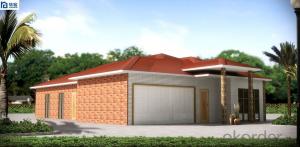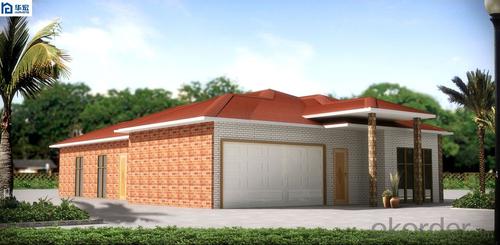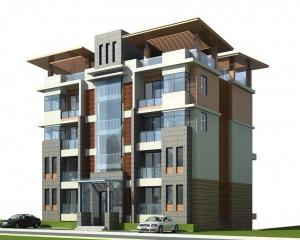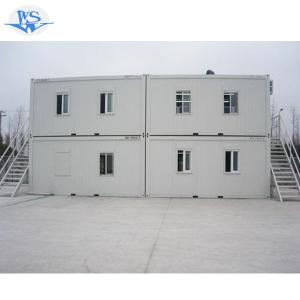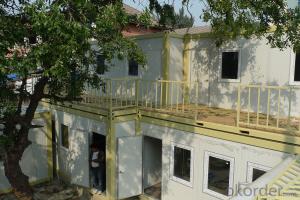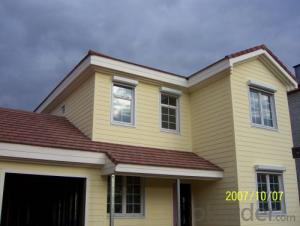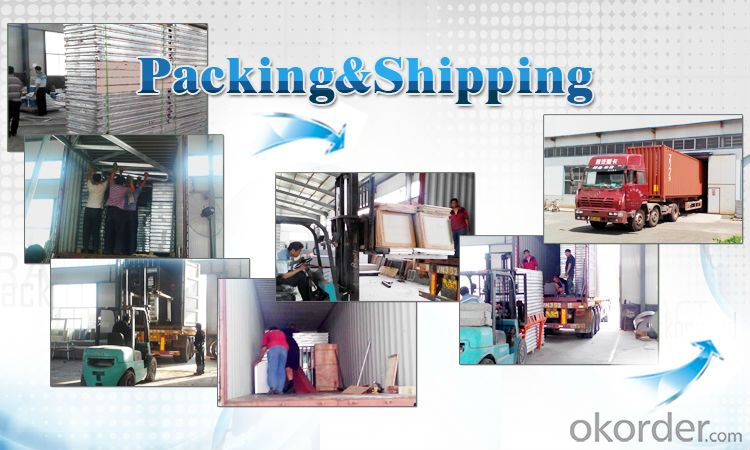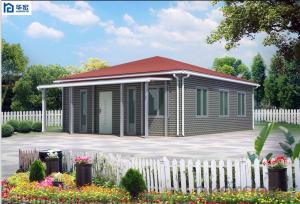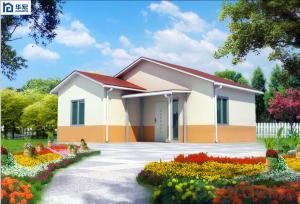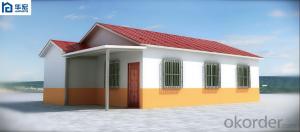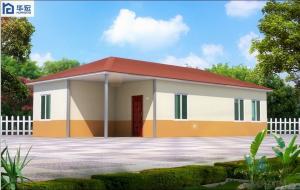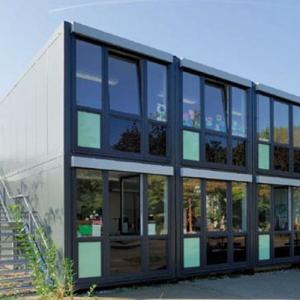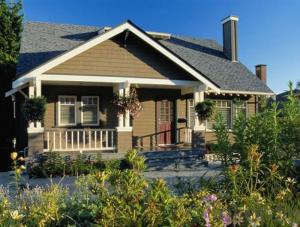Beautiful And Cheap Cement House
- Loading Port:
- China Main Port
- Payment Terms:
- TT OR LC
- Min Order Qty:
- -
- Supply Capability:
- -
OKorder Service Pledge
OKorder Financial Service
You Might Also Like
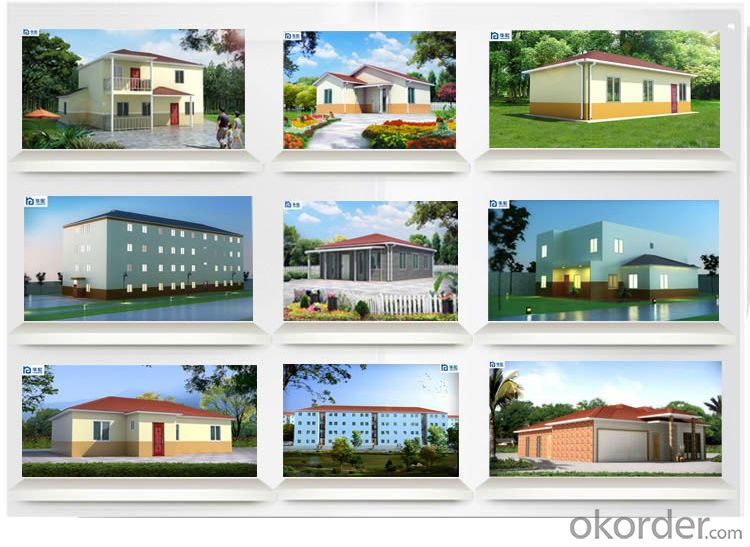
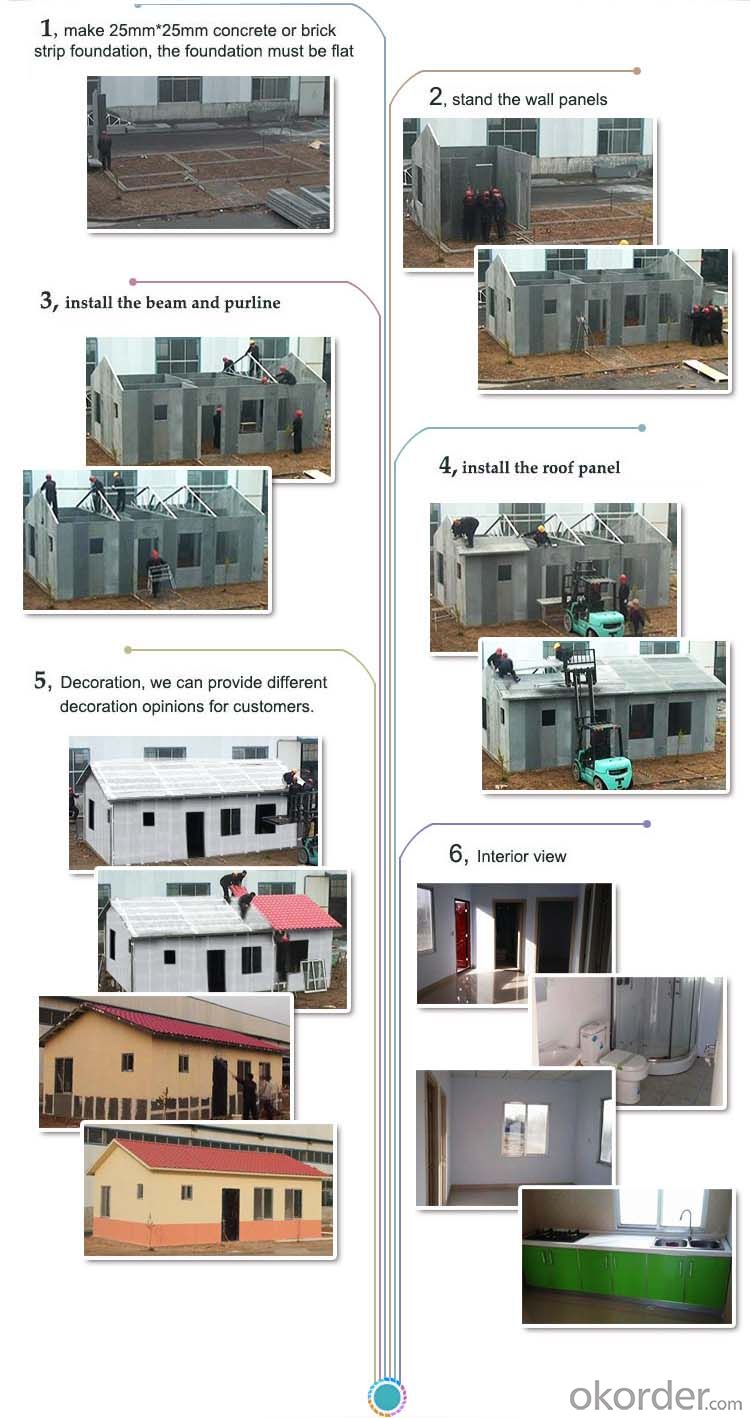
More questions:
1, What's your Payment term:
30% deposit by TT, 70% balance before loading container by TT; 100% LC at sight(total payment over 100,000USD);
2, How about Shipping:
We use 20 feet container and 40HQ container to ship the goods; Usually one 20 feet container can load about 50-60 square meters' house, 40HQ container can load about 120-140 square meters's house.
3, How to become your agent in our country:
First, you can make a report about your market, include the the rules and laws of prefab house, popular house models, target price, and potential sales quantity.
Second, you must place a trial order to act as the display.
Third, after finishing the sample house and getting the local people's feedback, we will give you the agent right in one area with limited time.
Fourth, Please note that we already have agent in Mumbai City India; Marshall Islands, Trinidad and Tobago.
4, Can you help me to purchase other things like furniture or appliance:
Because the customs law, our company can only export prefab house, so we just can purchase very little matched kitchen and bathroom facilities for you in consideration of customs clearance.
5, Can you send workers to help me build house.
Considering the labor cost, safety and visa issues, we suggest to send one or two engineers to guide and train your staffs. You must provide air tickets, hotel, and meal, and 100USD per day for engineer salary.
- Q: Can container houses be designed with a traditional or historical theme?
- Certainly, container houses can be designed with a traditional or historical theme without a doubt. While shipping container homes are commonly associated with modern and minimalist designs, there are no limitations on the style or theme that can be applied to these structures. By employing the appropriate design elements, materials, and finishes, container houses can be transformed to exemplify traditional or historical aesthetics. To achieve a traditional or historical theme, it is possible to incorporate various architectural elements into the design. For instance, the exterior of the container house can be covered with timeless materials like brick, stone, or timber, giving it an everlasting appearance. Additionally, historical architectural features such as gables, dormer windows, or ornamental details can be introduced to enhance the overall design. The interior of the container house can also be fashioned with a traditional theme by utilizing appropriate materials, colors, and furnishings. For example, a rustic or vintage atmosphere can be created by incorporating reclaimed wood or antique furniture. To evoke a sense of history, traditional moldings, wainscoting, or decorative wallpapers can be added to the walls. Moreover, the landscaping and outdoor design can contribute to the traditional or historical theme of a container house. To establish a charming and nostalgic ambiance, traditional garden elements like well-manicured lawns, flower beds, or hedges can be integrated into the surroundings. In conclusion, container houses can absolutely be designed with a traditional or historical theme. By thoughtfully considering and making creative design choices, these structures can seamlessly blend into their environment and reflect the desired aesthetic.
- Q: Are container houses suitable for retail stores?
- Container houses can indeed be suitable for retail stores. The versatility and cost-effectiveness of container houses make them a great option for various commercial purposes, including retail stores. Firstly, container houses provide an affordable alternative to traditional brick-and-mortar buildings. The cost of purchasing and converting a shipping container is significantly lower compared to constructing a new building. This cost advantage allows business owners to allocate more funds towards merchandising, marketing, and other essential aspects of their retail store. Secondly, container houses offer flexibility in terms of location. They can be easily transported and relocated, allowing retail store owners to change their business's location as needed. This mobility can be particularly beneficial for businesses that thrive in areas with high foot traffic or those that want to expand their customer base by experimenting with different locations. Furthermore, container houses can be customized and designed to suit the specific needs and aesthetics of a retail store. They can be easily modified to include windows, doors, insulation, electrical systems, and other necessary features for a functional store. With a wide range of design options available, container houses can be transformed into trendy and unique retail spaces that attract customers. Additionally, container houses are eco-friendly as they repurpose old shipping containers that would otherwise go to waste. By using these recycled materials, retail stores can contribute to sustainability efforts and reduce their environmental impact. However, it is important to note that container houses may have limitations in terms of size and space. While they can be combined or stacked to create larger structures, they might not be suitable for retail stores that require extensive floor space or have a large inventory. In conclusion, container houses can be a viable option for retail stores due to their affordability, flexibility, customization possibilities, and eco-friendliness. They provide an opportunity for businesses to establish unique and cost-effective retail spaces, making them a suitable choice for entrepreneurs looking for innovative solutions.
- Q: Are container houses suitable for youth or student housing?
- There are several reasons why container houses can be a suitable choice for youth or student housing. Firstly, they are often more affordable than traditional housing options, which is especially important for students on a tight budget. Container houses can be constructed at a fraction of the cost of a traditional house, making them an attractive option for students. Secondly, container houses offer great customization possibilities. They can be designed with multiple rooms, a common area, kitchen, and even bathrooms. This flexibility allows for accommodating different needs and preferences of students. Moreover, container houses are environmentally friendly. Many of them are made from recycled materials, which reduces the carbon footprint associated with construction. This aligns well with the values of environmentally conscious young people. Additionally, container houses are easily transportable. This can be beneficial for students who need to move frequently due to academic or work-related commitments. The ability to relocate without the hassle of finding new accommodation is a major advantage for students. However, it is important to consider the potential limitations of container houses. While they can be customized, they may not provide as much space as some students desire. Container houses are typically smaller in size, which may not be suitable for those who prefer more spacious living arrangements. Furthermore, the perception of container houses may vary among individuals. Some students may find the idea of living in a container house unique and exciting, while others may see it as less desirable compared to traditional housing options. In conclusion, container houses can be a suitable option for youth or student housing due to their affordability, customization options, eco-friendliness, and transportability. However, it is important to consider individual preferences and space requirements to ensure they meet the specific needs of the students in question.
- Q: What are the requirements for container house structure design?
- Containers for the architectural design of modular tools, itself has a low carbon, low cost, short construction time, removable transport and other characteristics
- Q: Are container houses suitable for permanent living?
- Depending on various factors, container houses have the potential to be suitable for permanent living. These houses are constructed from shipping containers, which are specifically engineered to endure extreme weather conditions and can be adapted to create comfortable living spaces. Affordability is one of the primary advantages of container houses. Generally, they are more cost-effective than traditional houses, making them an appealing option for individuals seeking homeownership without breaking the bank. Furthermore, container houses can be highly personalized to meet the specific needs and preferences of the homeowner. Another significant benefit of container houses is their eco-friendliness. By repurposing shipping containers, we actively reduce waste and minimize the carbon footprint associated with conventional construction methods. Moreover, the use of recycled materials in the construction process contributes to sustainable living. However, it is crucial to consider certain factors when contemplating container houses for permanent living. Adequate insulation is essential to maintain a comfortable living environment. Effective insulation is necessary to regulate temperature and minimize heat loss, particularly in extreme weather conditions. Additionally, careful planning and installation of plumbing and electrical systems are imperative. Furthermore, it is important to note that container houses typically have limited space, which may not be ideal for large families or individuals with a substantial amount of belongings. Nonetheless, innovative design and layout can help maximize the available space and provide storage solutions. In conclusion, with the proper considerations and modifications, container houses can be a viable option for permanent living. They offer affordability, customization, and eco-friendliness. Through careful planning and adjustments, container houses can provide comfortable and sustainable living spaces.
- Q: Can container houses be built with a home library or reading nook?
- Yes, container houses can definitely be built with a home library or reading nook. The versatility of container structures allows for customization and creative interior designs. By incorporating shelves, comfortable seating, and cozy lighting, container houses can easily accommodate a dedicated space for reading and storing books.
- Q: Can container houses be financed through traditional mortgages?
- Yes, container houses can be financed through traditional mortgages. While container houses are a relatively new concept in the housing market, they are gaining popularity due to their affordability and sustainability. Many lenders, including traditional mortgage providers, are recognizing this growing trend and are willing to finance container houses. However, it is important to note that the financing process for container houses might differ slightly from traditional homes. Lenders will evaluate factors such as the structural integrity, building permits, and compliance with local building codes before approving a mortgage. Additionally, the appraised value of a container house may be different from that of a traditional home, which could affect the loan amount. It is advisable to research and approach lenders who specialize in alternative housing options or have experience financing container houses. Working with a knowledgeable mortgage broker or loan officer can also be helpful in navigating the financing process and finding the best mortgage options for container houses.
- Q: Can container houses be built with sustainable materials?
- Yes, container houses can definitely be built with sustainable materials. The use of shipping containers as building blocks for homes is already an environmentally friendly approach in itself, as it repurposes these steel structures that would otherwise go to waste. Additionally, sustainable materials can be incorporated into the construction of container houses to further enhance their eco-friendliness. For instance, sustainable insulation materials such as recycled denim, cellulose, or wool can be used to insulate the container walls, floors, and ceilings, reducing energy consumption for heating and cooling. Renewable and low-impact flooring options like bamboo or cork can be utilized. Energy-efficient windows and doors made from recycled materials can be installed, along with the use of low-VOC (volatile organic compound) paints and finishes to improve indoor air quality. Furthermore, incorporating renewable energy systems like solar panels can help container houses become more self-sufficient and reduce reliance on fossil fuels. Rainwater harvesting systems can be implemented to collect and reuse water, reducing water consumption and minimizing strain on local water sources. By employing these sustainable materials and practices, container houses can significantly reduce their environmental footprint and contribute to a more sustainable and eco-friendly housing solution.
- Q: How durable are container houses?
- Container houses are known for their durability and strength. These structures are typically made from corten steel, which is highly resilient and resistant to corrosion. Corten steel is designed to withstand extreme weather conditions, making it suitable for container housing. Container houses are also built to withstand transportation and stacking. They are designed to be stackable up to nine containers high, which demonstrates their ability to handle significant weight and pressure. Furthermore, container houses are built to last for a long time. With proper maintenance and care, these structures can have a lifespan of 25 to 30 years or even more. The steel frames are resistant to pests, mold, and fire, further enhancing their durability. In terms of structural integrity, container houses can withstand strong winds and even earthquakes. Their solid steel structure provides stability and strength, ensuring the safety of occupants. However, it is important to note that the durability of container houses can vary depending on the construction methods used and the quality of materials. Proper insulation, sealing, and regular maintenance are essential to ensure longevity and prevent any potential issues. In summary, container houses are highly durable structures. With their robust steel frames and resistance to various environmental factors, these houses can withstand the test of time and provide a safe and secure living space for their occupants.
- Q: Are container houses suitable for tiny homes?
- Yes, container houses are suitable for tiny homes. Container houses, also known as shipping container homes, are increasingly being used as an affordable and sustainable option for tiny homes. They are made from repurposed shipping containers, which are sturdy, durable, and readily available. Container houses offer several advantages for tiny homes. Firstly, they are highly customizable and can be designed to meet specific needs and preferences. The containers can be modified and combined in various ways to create a unique and functional living space. Additionally, container homes can be easily expanded or downsized by adding or removing containers as required, providing flexibility for changing needs. Container houses are also cost-effective. Compared to traditional construction, building a container home can be significantly cheaper. The cost of purchasing and modifying containers is generally lower than building a conventional house, making them an attractive option for those on a limited budget. Furthermore, container homes are energy-efficient and environmentally friendly. The repurposing of shipping containers reduces waste and minimizes the use of new materials. In terms of livability, container houses can provide comfortable and functional living spaces. With proper insulation, ventilation, and interior design, container homes can offer a cozy and aesthetically pleasing environment. The compact size of containers is well-suited for tiny homes, as it encourages minimalistic living and efficient use of space. However, it is important to consider some limitations of container houses for tiny homes. One major challenge is the need for insulation to regulate temperature and minimize condensation. Proper insulation is crucial to maintain a comfortable indoor environment, especially in extreme climates. Additionally, the limited width of shipping containers may require creative interior design solutions to maximize space utilization. Overall, container houses are a suitable option for tiny homes, offering affordability, sustainability, and versatility. With careful planning and design considerations, container homes can provide a comfortable and stylish living space while promoting a minimalist and eco-friendly lifestyle.
Send your message to us
Beautiful And Cheap Cement House
- Loading Port:
- China Main Port
- Payment Terms:
- TT OR LC
- Min Order Qty:
- -
- Supply Capability:
- -
OKorder Service Pledge
OKorder Financial Service
Similar products
Hot products
Hot Searches
